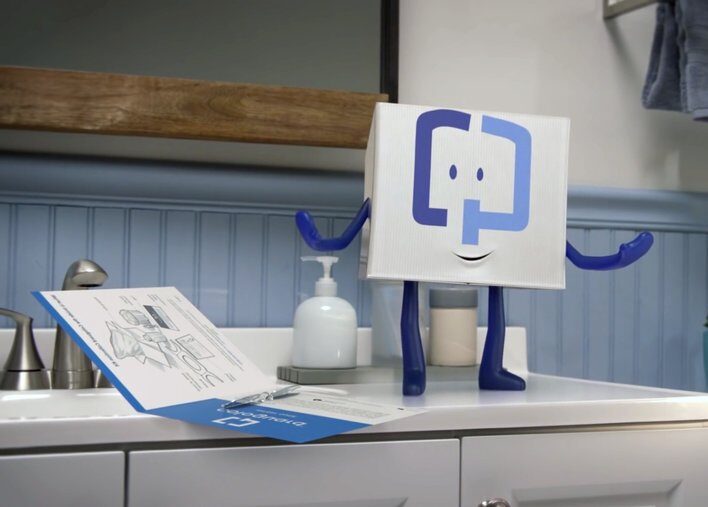Tests & Procedures
Learn About Cologuard
- Home
- For Patients
- Resources
- Tests & Procedures
- Cologuard Resources

What is a Colonoscopy?
A colonoscopy is an outpatient procedure in which the inside of the large intestine (colon and rectum) is examined. A colonoscopy is commonly used to evaluate gastrointestinal symptoms, such as rectal and intestinal bleeding, abdominal pain, or changes in bowel habits. Colonoscopies are also performed in individuals without symptoms to check for colorectal polyps or cancer. A screening colonoscopy is recommended for anyone 50 years of age and older, and for anyone with parents, siblings or children with a history of colorectal cancer or polyps. ColonoscopyAssist™ specializes in providing an affordable, reduced cost colonoscopy screenings.
What happens before a colonoscopy?
To complete a successful colonoscopy, the bowel must be clean so that the physician can clearly view the colon. It is very important that you read and follow all of the instructions given to you for your bowel preparation well in advance of the procedure. Without proper preparation, the colonoscopy will not be successful and the test may have to be repeated. If you feel nauseated or vomit while taking the bowel preparation, wait 30 minutes before drinking more fluid and start with small sips of solution. Some activity (such as walking) or a few soda crackers may help decrease the nausea you are feeling. If the nausea persists, please contact your health care provider. You may experience skin irritation around the anus due to the passage of liquid stools. In order to prevent and treat skin irritation, you should: – Apply Vaseline or Desitin® ointment to the skin around the anus before drinking the bowel preparation medications; these products can be purchased at any drug store. – Wipe the skin after each bowel movement with disposable wet wipes instead of toilet paper. – Sit in a bathtub filled with warm water for 10 to 15 minutes after you finish passing a stool; after soaking, blot the skin dry with a soft cloth, apply Vaseline or Desitin ointment to the anal area, and place a cotton ball just outside your anus to absorb leaking fluid.
What happens during a colonoscopy?
During a colonoscopy, a physician uses a colonoscope (a long, flexible instrument about 1/2 inch in diameter) to view the lining of the colon. The colonoscope is inserted into the rectum and advanced through the large intestine. If necessary during a colonoscopy, small amounts of tissue can be removed for analysis (a biopsy) and polyps can be identified and entirely removed. In many cases, a colonoscopy allows accurate diagnosis and treatment of colorectal problems without the need for a major operation.
– You are asked to wear a hospital gown and remove eyeglasses.
– You are given a pain reliever and a sedative intravenously (in your vein); you will feel relaxed and somewhat drowsy.
– You will lie on the left side, with your knees drawn up towards your chest.
– A small amount of air is used to expand the colon so the physician can see the colon walls.
– You may feel mild cramping during the procedure; cramping can be reduced by taking slow, deep breaths.
– The colonoscope is slowly withdrawn while the lining of your bowel is carefully examined.
– The procedure lasts from 30 minutes to one hour.
What happens after a colonoscopy?
During a colonoscopy, a physician uses a colonoscope (a long, flexible instrument about 1/2 inch in diameter) to view the lining of the colon. The colonoscope is inserted into the rectum and advanced through the large intestine. If necessary during a colonoscopy, small amounts of tissue can be removed for analysis (a biopsy) and polyps can be identified and entirely removed. In many cases, a colonoscopy allows accurate diagnosis and treatment of colorectal problems without the need for a major operation.
– You are asked to wear a hospital gown and remove eyeglasses.
– You are given a pain reliever and a sedative intravenously (in your vein); you will feel relaxed and somewhat drowsy.
– You will lie on the left side, with your knees drawn up towards your chest.
– A small amount of air is used to expand the colon so the physician can see the colon walls.
– You may feel mild cramping during the procedure; cramping can be reduced by taking slow, deep breaths.
– The colonoscope is slowly withdrawn while the lining of your bowel is carefully examined.
– The procedure lasts from 30 minutes to one hour.
Please note: The information on this website is provided by ColonoscopyAssist™ for educational purposes only. It is not a substitute for professional medical care or advice.
All Inclusive Rates
Starting From:
$1275
$1275
$500
$599
$25
What is ColonoscopyAssist?
ColonoscopyAssist is a program that streamlines the scheduling and payment process for GI procedures, making it easier for organizations to provide timely and accessible care to their beneficiaries.
The following services are provided at affordable pre-negotiated rates:
1. Colonoscopy (screening or diagnostic)
2. Upper Endoscopy
3. Flexible Sigmoidoscopy
4. Virtual Colonoscopy
5. Cologuard
6. FIT
Thousands of Happy Patients
This procedure was handled quickly and professionally. Everyone was helpful and they were in contact via email as needed.The actual procedure was less than an hour and the Dr came in after I woke up to explain the results to my satisfaction. Thank you all!
Great staff, great care, great part of a health care movement that cuts through the insurance and health care industrial complex that is ruining our country! ColonoscopyAssist is wonderful - my personal experience has proven you can get great care quickly and reasonably!
I am very satisfied with the services provided by Colonoscopy Assist. Their communication was excellent, always responding quickly and efficiently to all my inquiries. I highly recommend them to anyone in need of similar services.
I was hugely blessed to discover ColonoscopyAssist! The online registration process was easy to follow and the communication after that about my appointment, prep and procedure was terrific! Highly recommended for anyone who has to pay for a colonoscopy out of pocket!
Excellent experience! I highly recommend ColonoscopyAssist! Everything from the scheduling to the actual procedure went very well. Being a self pay customer, this was a very cost effective way to perform this important medical procedure.
As Featured In





Blogs & Healthcare News
Our blog unravels the complexities of GI procedures, industry advancements, and the latest breakthroughs.
Tests & Procedures
Learn About Cologuard
- Home
- For Patients
- Resources
- Tests & Procedures
- Cologuard Resources

What is a Colonoscopy?
A colonoscopy is an outpatient procedure in which the inside of the large intestine (colon and rectum) is examined. A colonoscopy is commonly used to evaluate gastrointestinal symptoms, such as rectal and intestinal bleeding, abdominal pain, or changes in bowel habits. Colonoscopies are also performed in individuals without symptoms to check for colorectal polyps or cancer. A screening colonoscopy is recommended for anyone 50 years of age and older, and for anyone with parents, siblings or children with a history of colorectal cancer or polyps. ColonoscopyAssist™ specializes in providing an affordable, reduced cost colonoscopy screenings.
What happens before a colonoscopy?
To complete a successful colonoscopy, the bowel must be clean so that the physician can clearly view the colon. It is very important that you read and follow all of the instructions given to you for your bowel preparation well in advance of the procedure. Without proper preparation, the colonoscopy will not be successful and the test may have to be repeated. If you feel nauseated or vomit while taking the bowel preparation, wait 30 minutes before drinking more fluid and start with small sips of solution. Some activity (such as walking) or a few soda crackers may help decrease the nausea you are feeling. If the nausea persists, please contact your health care provider. You may experience skin irritation around the anus due to the passage of liquid stools. In order to prevent and treat skin irritation, you should: – Apply Vaseline or Desitin® ointment to the skin around the anus before drinking the bowel preparation medications; these products can be purchased at any drug store. – Wipe the skin after each bowel movement with disposable wet wipes instead of toilet paper. – Sit in a bathtub filled with warm water for 10 to 15 minutes after you finish passing a stool; after soaking, blot the skin dry with a soft cloth, apply Vaseline or Desitin ointment to the anal area, and place a cotton ball just outside your anus to absorb leaking fluid.
What happens during a colonoscopy?
During a colonoscopy, a physician uses a colonoscope (a long, flexible instrument about 1/2 inch in diameter) to view the lining of the colon. The colonoscope is inserted into the rectum and advanced through the large intestine. If necessary during a colonoscopy, small amounts of tissue can be removed for analysis (a biopsy) and polyps can be identified and entirely removed. In many cases, a colonoscopy allows accurate diagnosis and treatment of colorectal problems without the need for a major operation.
– You are asked to wear a hospital gown and remove eyeglasses.
– You are given a pain reliever and a sedative intravenously (in your vein); you will feel relaxed and somewhat drowsy.
– You will lie on the left side, with your knees drawn up towards your chest.
– A small amount of air is used to expand the colon so the physician can see the colon walls.
– You may feel mild cramping during the procedure; cramping can be reduced by taking slow, deep breaths.
– The colonoscope is slowly withdrawn while the lining of your bowel is carefully examined.
– The procedure lasts from 30 minutes to one hour.
What happens after a colonoscopy?
During a colonoscopy, a physician uses a colonoscope (a long, flexible instrument about 1/2 inch in diameter) to view the lining of the colon. The colonoscope is inserted into the rectum and advanced through the large intestine. If necessary during a colonoscopy, small amounts of tissue can be removed for analysis (a biopsy) and polyps can be identified and entirely removed. In many cases, a colonoscopy allows accurate diagnosis and treatment of colorectal problems without the need for a major operation.
– You are asked to wear a hospital gown and remove eyeglasses.
– You are given a pain reliever and a sedative intravenously (in your vein); you will feel relaxed and somewhat drowsy.
– You will lie on the left side, with your knees drawn up towards your chest.
– A small amount of air is used to expand the colon so the physician can see the colon walls.
– You may feel mild cramping during the procedure; cramping can be reduced by taking slow, deep breaths.
– The colonoscope is slowly withdrawn while the lining of your bowel is carefully examined.
– The procedure lasts from 30 minutes to one hour.
Please note: The information on this website is provided by ColonoscopyAssist™ for educational purposes only. It is not a substitute for professional medical care or advice.
All Inclusive Rates
Starting From:
Colonoscopy
$1275
Upper Endoscopy
$1275
Hemorrhoid Banding
$500
Cologuard
$599
FIT / FOBT
$25
What is ColonoscopyAssist?
ColonoscopyAssist is a program that streamlines the scheduling and payment process for GI procedures, making it easier for organizations to provide timely and accessible care to their beneficiaries.
The following services are provided at affordable pre-negotiated rates:
1. Colonoscopy (screening or diagnostic)
2. Upper Endoscopy
3. Flexible Sigmoidoscopy
4. Virtual Colonoscopy
5. Cologuard
6. FIT
Thousands of Happy Patients
This procedure was handled quickly and professionally. Everyone was helpful and they were in contact via email as needed.The actual procedure was less than an hour and the Dr came in after I woke up to explain the results to my satisfaction. Thank you all!
Great staff, great care, great part of a health care movement that cuts through the insurance and health care industrial complex that is ruining our country! ColonoscopyAssist is wonderful - my personal experience has proven you can get great care quickly and reasonably!
I am very satisfied with the services provided by Colonoscopy Assist. Their communication was excellent, always responding quickly and efficiently to all my inquiries. I highly recommend them to anyone in need of similar services.
I was hugely blessed to discover ColonoscopyAssist! The online registration process was easy to follow and the communication after that about my appointment, prep and procedure was terrific! Highly recommended for anyone who has to pay for a colonoscopy out of pocket!
Excellent experience! I highly recommend ColonoscopyAssist! Everything from the scheduling to the actual procedure went very well. Being a self pay customer, this was a very cost effective way to perform this important medical procedure.
As Featured In
Blogs & Healthcare News
Our blog unravels the complexities of GI procedures, industry advancements, and the latest breakthroughs.
Tests & Procedures
Learn About Cologuard
- Home
- For Patients
- Resources
- Tests & Procedures
- Cologuard Resources

What is a Colonoscopy?
A colonoscopy is an outpatient procedure in which the inside of the large intestine (colon and rectum) is examined. A colonoscopy is commonly used to evaluate gastrointestinal symptoms, such as rectal and intestinal bleeding, abdominal pain, or changes in bowel habits. Colonoscopies are also performed in individuals without symptoms to check for colorectal polyps or cancer. A screening colonoscopy is recommended for anyone 50 years of age and older, and for anyone with parents, siblings or children with a history of colorectal cancer or polyps. ColonoscopyAssist™ specializes in providing an affordable, reduced cost colonoscopy screenings.
What happens before a colonoscopy?
To complete a successful colonoscopy, the bowel must be clean so that the physician can clearly view the colon. It is very important that you read and follow all of the instructions given to you for your bowel preparation well in advance of the procedure. Without proper preparation, the colonoscopy will not be successful and the test may have to be repeated. If you feel nauseated or vomit while taking the bowel preparation, wait 30 minutes before drinking more fluid and start with small sips of solution. Some activity (such as walking) or a few soda crackers may help decrease the nausea you are feeling. If the nausea persists, please contact your health care provider. You may experience skin irritation around the anus due to the passage of liquid stools. In order to prevent and treat skin irritation, you should: – Apply Vaseline or Desitin® ointment to the skin around the anus before drinking the bowel preparation medications; these products can be purchased at any drug store. – Wipe the skin after each bowel movement with disposable wet wipes instead of toilet paper. – Sit in a bathtub filled with warm water for 10 to 15 minutes after you finish passing a stool; after soaking, blot the skin dry with a soft cloth, apply Vaseline or Desitin ointment to the anal area, and place a cotton ball just outside your anus to absorb leaking fluid.
What happens during a colonoscopy?
During a colonoscopy, a physician uses a colonoscope (a long, flexible instrument about 1/2 inch in diameter) to view the lining of the colon. The colonoscope is inserted into the rectum and advanced through the large intestine. If necessary during a colonoscopy, small amounts of tissue can be removed for analysis (a biopsy) and polyps can be identified and entirely removed. In many cases, a colonoscopy allows accurate diagnosis and treatment of colorectal problems without the need for a major operation.
– You are asked to wear a hospital gown and remove eyeglasses.
– You are given a pain reliever and a sedative intravenously (in your vein); you will feel relaxed and somewhat drowsy.
– You will lie on the left side, with your knees drawn up towards your chest.
– A small amount of air is used to expand the colon so the physician can see the colon walls.
– You may feel mild cramping during the procedure; cramping can be reduced by taking slow, deep breaths.
– The colonoscope is slowly withdrawn while the lining of your bowel is carefully examined.
– The procedure lasts from 30 minutes to one hour.
What happens after a colonoscopy?
During a colonoscopy, a physician uses a colonoscope (a long, flexible instrument about 1/2 inch in diameter) to view the lining of the colon. The colonoscope is inserted into the rectum and advanced through the large intestine. If necessary during a colonoscopy, small amounts of tissue can be removed for analysis (a biopsy) and polyps can be identified and entirely removed. In many cases, a colonoscopy allows accurate diagnosis and treatment of colorectal problems without the need for a major operation.
– You are asked to wear a hospital gown and remove eyeglasses.
– You are given a pain reliever and a sedative intravenously (in your vein); you will feel relaxed and somewhat drowsy.
– You will lie on the left side, with your knees drawn up towards your chest.
– A small amount of air is used to expand the colon so the physician can see the colon walls.
– You may feel mild cramping during the procedure; cramping can be reduced by taking slow, deep breaths.
– The colonoscope is slowly withdrawn while the lining of your bowel is carefully examined.
– The procedure lasts from 30 minutes to one hour.
Please note: The information on this website is provided by ColonoscopyAssist™ for educational purposes only. It is not a substitute for professional medical care or advice.
All Inclusive Rates
Starting From:
$1275
$1275
$500
$599
$25
What is ColonoscopyAssist?
ColonoscopyAssist is a program that streamlines the scheduling and payment process for GI procedures, making it easier for organizations to provide timely and accessible care to their beneficiaries.
The following services are provided at affordable pre-negotiated rates:
1. Colonoscopy (screening or diagnostic)
2. Upper Endoscopy
3. Flexible Sigmoidoscopy
4. Virtual Colonoscopy
5. Cologuard
6. FIT
Thousands of Happy Patients
This procedure was handled quickly and professionally. Everyone was helpful and they were in contact via email as needed.The actual procedure was less than an hour and the Dr came in after I woke up to explain the results to my satisfaction. Thank you all!
Great staff, great care, great part of a health care movement that cuts through the insurance and health care industrial complex that is ruining our country! ColonoscopyAssist is wonderful - my personal experience has proven you can get great care quickly and reasonably!
I am very satisfied with the services provided by Colonoscopy Assist. Their communication was excellent, always responding quickly and efficiently to all my inquiries. I highly recommend them to anyone in need of similar services.
I was hugely blessed to discover ColonoscopyAssist! The online registration process was easy to follow and the communication after that about my appointment, prep and procedure was terrific! Highly recommended for anyone who has to pay for a colonoscopy out of pocket!
Excellent experience! I highly recommend ColonoscopyAssist! Everything from the scheduling to the actual procedure went very well. Being a self pay customer, this was a very cost effective way to perform this important medical procedure.
As Featured In





Blogs & Healthcare News
The simplicity brings elegance. Show the feature image, date, and the title to grasp the attention of your website visitors








